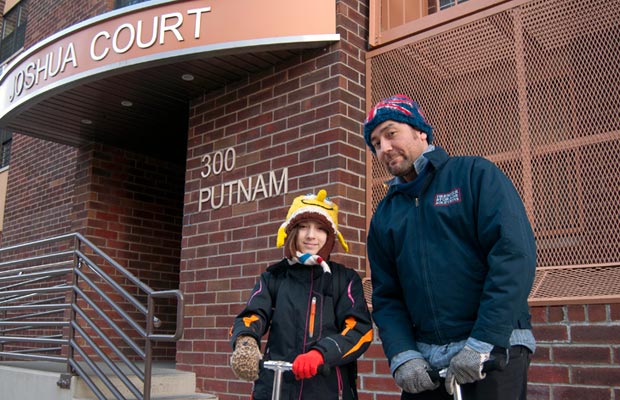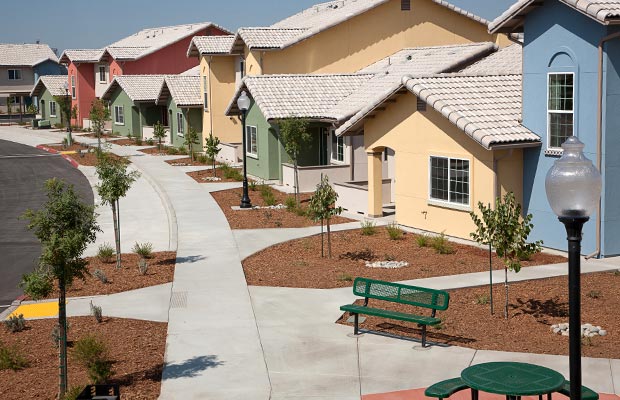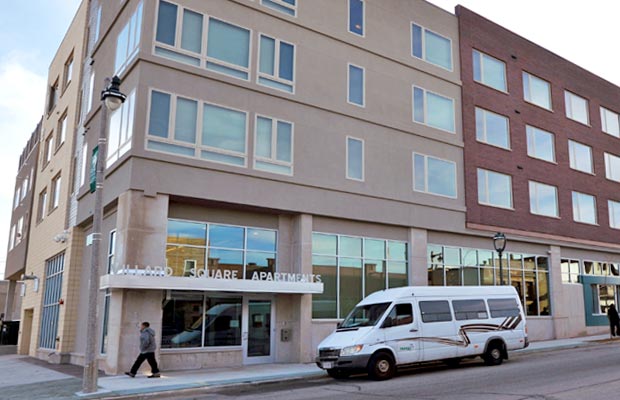Goal 1
The Built Environment

Joshua Court
Brooklyn, New York
Joshua Court is anchoring the revitalization of a once blighted block in Brooklyn’s Bedford-Stuyvesant neighborhood. No longer a crumbling haven for drugs and violence, this green rehab provides affordable homes to 52 families. It extends its impact to neighbors with a community center that hosts arts and after-school classes for kids and job-readiness workshops for adults. New York City LISC and National Equity Fund invested $5 million to help Bridge Street Development Corp. acquire the property and begin rehab work, which includes solar panels and energy-efficient heating and cooling systems to help reduce operating costs and improve indoor air quality.

Goshen Village II
Tulare County, California
In California's rural Tulare County, community life begins at home for hard working farmworkers. Goshen Village II is that connection point for 56 families who might otherwise be living in substandard, overcrowded units. With support from Rural LISC and $4.6 million in equity from National Equity Fund, Self-Help Enterprises built this energy-efficient development, where residents can learn in after-school and computer programs, and play on the basketball courts, athletic fields and playgrounds. More than bricks and mortar, Goshen Village II builds community and enhances overall quality of life.

Villard Square Grandfamily Apartments
Milwaukee, Wisconsin
Villard Square on Milwaukee's near northwest side is the story of two problems finding solutions in a single building. On the ground level is a beautiful new public library—a replacement for an aging facility that threatened to leave the area, but for the community rallying to save it. Above it are 47 apartments for grandfamilies, where grandparents are primary care givers for school-age children. LISC provided a $275,000 loan and technical assistance. Residents and the 70 children in their care have access to social services that help with finances, healthcare, employment, kid's recreation and other services. It reflects a holistic approach to families and communities.
Communities littered with blighted properties seem desolate. They isolate residents from opportunity and alarm potential investors. That’s why the physical redevelopment of low-income neighborhoods, especially as regards housing, is so critical to their recovery. New construction and renovation efforts eliminate and clean-up vacant, deteriorated properties and create quality, affordable homes that root families to the community and connect them to each other. And by putting rents and mortgages within reach, residents have more disposable income to spend on local goods and services. The improved physical environment helps drive neighborhood safety and become the most visible evidence of new growth and opportunity. It fuels wider gains that have a lasting impact.
Neighborhoods can have all of that even after decades of decay and decline. LISC’s Building Sustainable Communities comprehensive approach to revitalization can change the outlook for disadvantaged places. Incomes grow, crime drops, blight fades and families flourish. They become sustainable communities, good places to live.